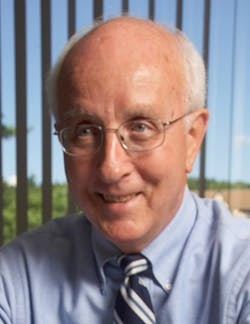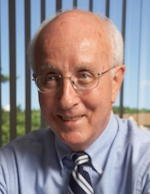It’s been a bit more than 12 months since U.S. cities began to shut down in response to the spreading COVID-19 virus. In the beginning, non-essential companies independently exercised caution by closing facilities and asking employees to work remotely from home. For most it was a novel practice, while for others like myself, always having worked from home, it was business as usual. However, as weeks passed and startlingly bad numbers of COVID-19 hospitalizations and deaths increased, stricter travel bans were enacted. For example, in my home state of Massachusetts, travel to other contiguous states resulted in a voluntary 14-day quarantine. As a consequence, we were essentially on a lockdown, which was only recently lifted as the virus numbers decreased measurably.
One result was the cancellation of established trade shows and technical conferences over the course of the year, with many canceled in the new year and beyond. Consequently, we learned to attend Zoom meetings and virtual trade shows—the latter not a very successful solution in my experience, as these events did not allow for the social contact we journalists thrive on at real shows.
I sense that a trend has been started that may become the norm. Already, companies are offering staff options to be remote and business space vacancies are climbing in key cities throughout the U.S. A rising number of complaints about lack of social contact are being heard and I, for one, having decades of experience, agree it is the most negative factor about working remotely.
In this issue, a strain gauge, which is used to measure the strain of a technical component, consists of a metallic foil pattern glued on a surface and connected manually. A new approach by researchers at Fraunhofer ILT and i4M Technologies is the direct manufacturing of the sensor and electrical interconnects on the component by a combination of ink-jet printing and laser sintering to allow a fully automatable process. In addition, an integrated low power radio transmitter has been placed on the sensor for wireless telemetry. This way, the sensor can be run for years without connecting to an additional power source (see article).
Ron Schaeffer, our expert on ultrashort-pulse (USP) lasers, writes that their primary focus was on cutting and drilling applications, especially those where the required end product could not be achieved with longer pulse length lasers, or where significant and costly post laser processing was required. However, he posits that these lasers, while normally capable of very high repetition rates (1–10 MHz or more), are limited if the beam cannot be moved fast enough to avoid dwell times long enough to impart heat to the material. Thus, the goal of covering large surfaces economically is hard to achieve. Advances in technology now allow very fast delivery of high-repetition-rate USP light to large functional surfaces, and he explores some of these applications and how the end results are achieved (see article).
Next month, look for Geoff Shannon’s (Coherent) take on advances in laser processing medical devices and an update on very high-power fiber laser metal cutting by Nikki Amico (Bystronic).

